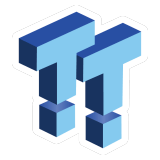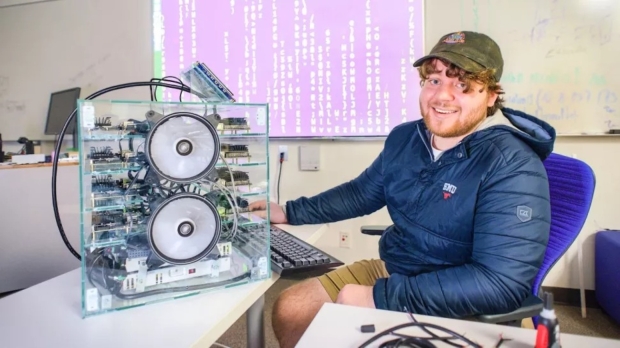NVIDIA's nifty little Jetson Nano modules have been used by two students at the Southern Methodist University in Dallas, Texas to create a mini supercomputer.
The desktop supercomputer is powered by 16 x NVIDIA Jetson Nano modules, with the students building it into a clear acrylic case, including the power supplies required, cooling fans to get rid of the heat, and a network switch to connect it all together.
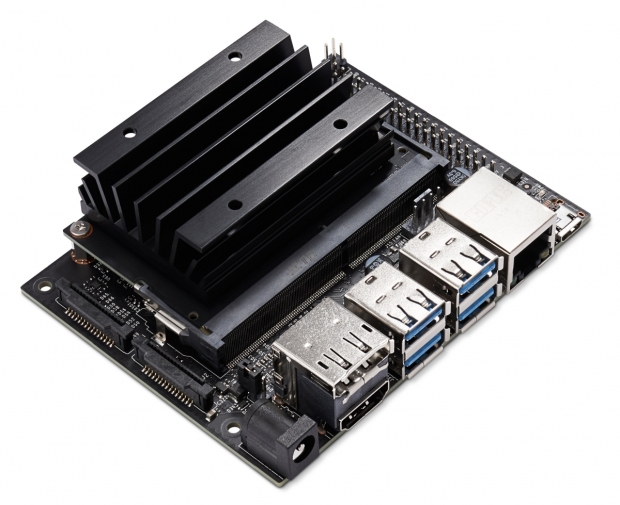
NVIDIA's Jetson Nano module
Southern Methodist University received outside funding to design the NVIDIA Jetson Nano-powered desktop supercomputer, which will be used to educate students about how a computer cluster works. The project took four months of learning and labor for the design and creation, while the students were learning about networking.
The students started off with the 16 x NVIDIA Jetson Nano modules inside of cardboard containers, allowing them to use the cardboard boxes to dissipate heat while designing the other parts of the desktop supercomputer. They learned how to strip wires and the skills of using laser-cutting equipment.
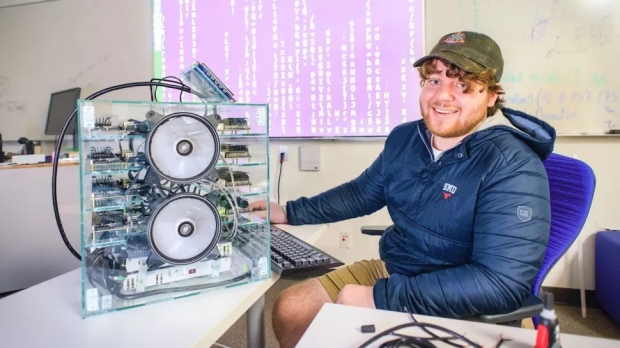
Eric Godat, one of the students who worked on the desktop supercomputer
Eric Godat, team leader for Research and Data Science IT group, Southern Methodist University explains: "We started this project to demonstrate the nuts and bolts of what goes into a computer cluster. Our NVIDIA DGX SuperPOD just opened up on campus, so we don't really need this baby supercomputer to be an actual compute environment. But the mini cluster is an effective teaching tool for how all this stuff really works - it lets students experiment with stripping the wires, managing a parallel file system, reimaging cards and deploying cluster software".
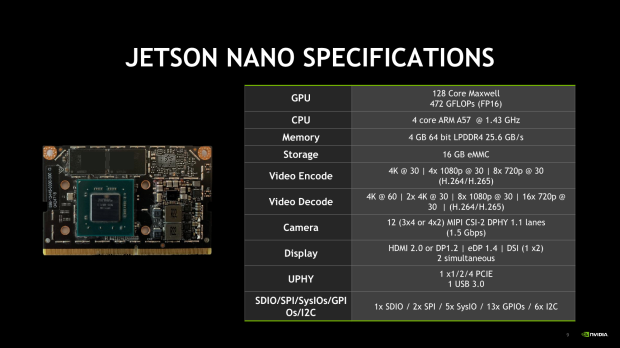
NVIDIA Jetson Nano module details
NVIDIA's little Jetson Nano costs $99 and features a 64-bit Arm A57 processor, and NVIDIA Maxwell GPU with 128 cores, capable of pumping out around 472 GFLOPs of FP16 compute performance, which is the standard for introductory AI workloads. Each of the NVIDIA Jetson Nano modules uses 10W of power, while the desktop supercomputer has USB, HDMI, and Ethernet ports as well as M.2 SSD support and 4GB of LPDDR4 memory, and 16GB of eMMC storage.
The system itself runs Ubuntu, which has been exclusively designed to work with NVIDIA hardware... this means video encoding and decoding support reaches 4K 60FPS, as well as packing HEVC codec support. For students, NVIDIA's Jetson Nano module features the company's Jetpack application, which helps students out on machine learning on a minute scale. Very cool to see, guys!
